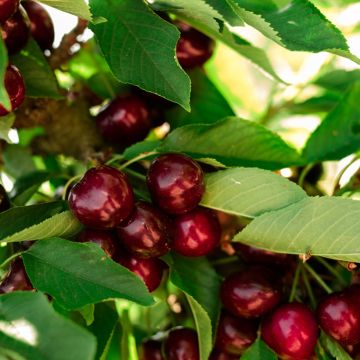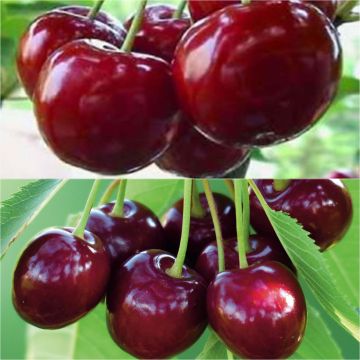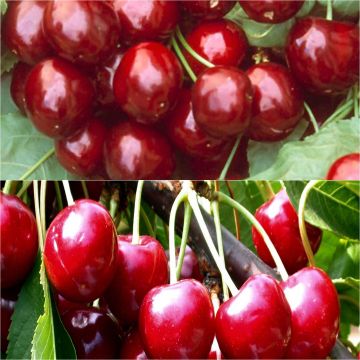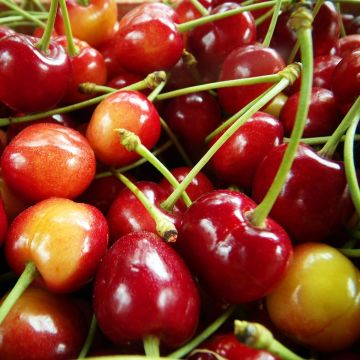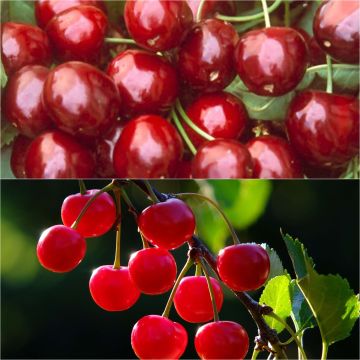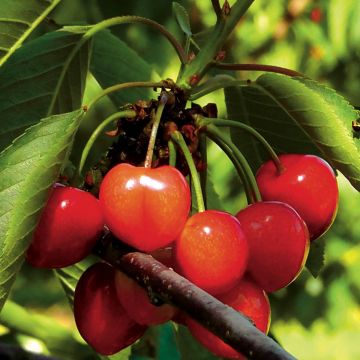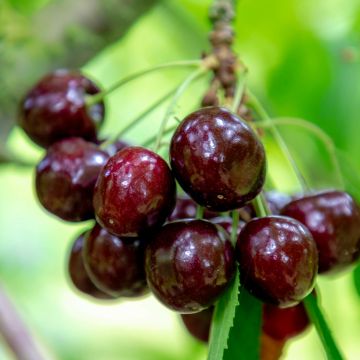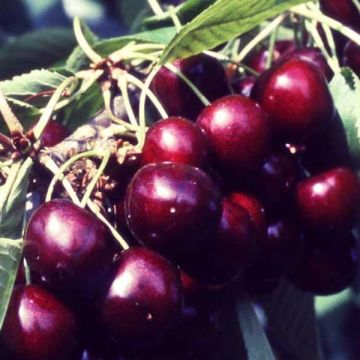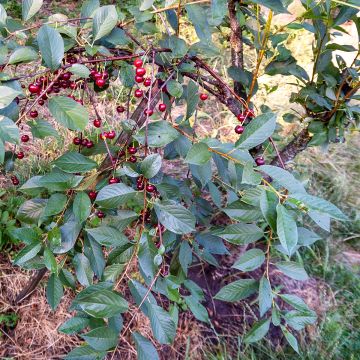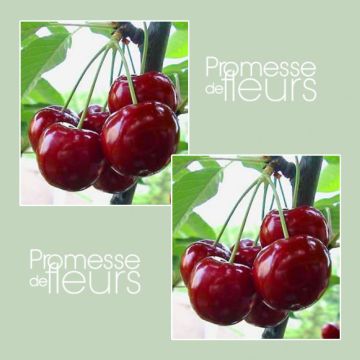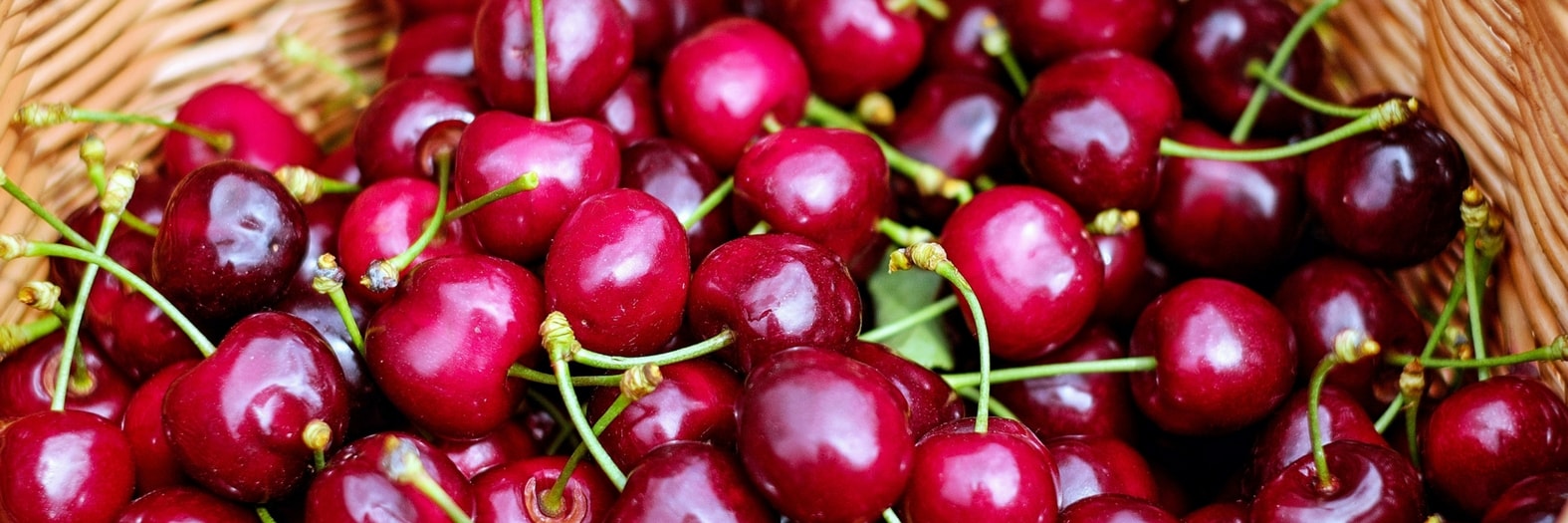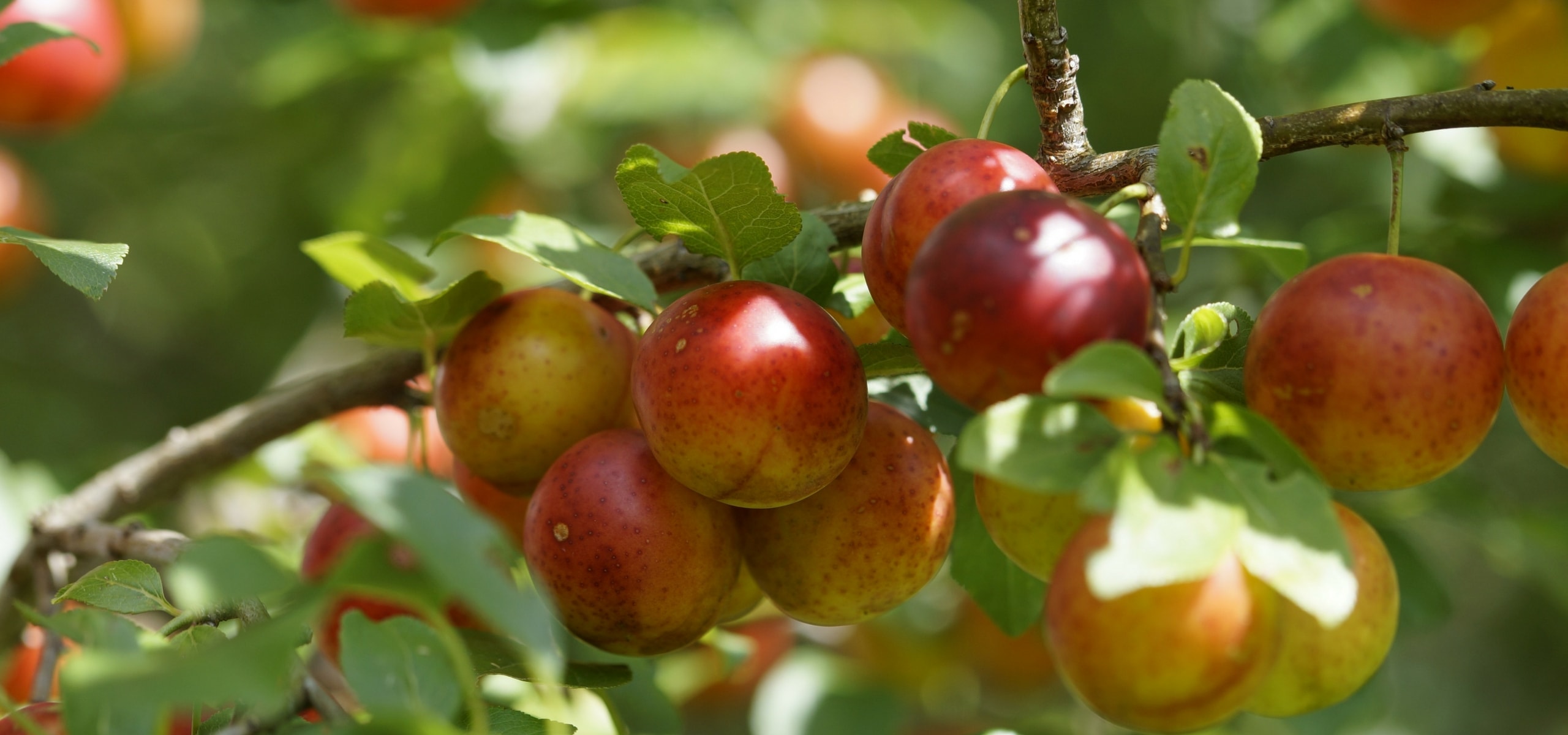

Two-in-one cherry tree - Prunus cerasus Bigarreau Burlat and Napoléon
Two-in-one cherry tree - Prunus cerasus Bigarreau Burlat and Napoléon
Prunus cerasus Bigarreau Burlat, Napoléon
Wild Cherry, Sweet Cherry, Bird Cherry
Special offer!
Receive a €20 voucher for any order over €90 (excluding delivery costs, credit notes, and plastic-free options)!
1- Add your favorite plants to your cart.
2- Once you have reached €90, confirm your order (you can even choose the delivery date!).
3- As soon as your order is shipped, you will receive an email containing your voucher code, valid for 3 months (90 days).
Your voucher is unique and can only be used once, for any order with a minimum value of €20, excluding delivery costs.
Can be combined with other current offers, non-divisible and non-refundable.
Why not try an alternative variety in stock?
View all →This plant carries a 6 months recovery warranty
More information
We guarantee the quality of our plants for a full growing cycle, and will replace at our expense any plant that fails to recover under normal climatic and planting conditions.
Description
The Bigarreau Burlat and the Bigarreau Napoléon cherries are grown on the same tree to offer gardeners an abundant harvest of cherries between late May and July. Flowering in unison, these two varieties grafted in a Y-shape onto the same rootstock pollinate each other. 'Burlat' is an early and productive variety, yielding large, sweet fruits with firm, crunchy flesh and dark red skin, of excellent taste quality. The 'Napoléon', recognisable by its red and yellow skin, is better suited for processing. This very ornamental, "two-in-one" cherry tree offers a dazzling white flowering in March-April, followed by beneficial shade in summer. Production becomes optimal when the tree is 6-7 years old.
Its excellent cold resistance and adaptability to all types of soil, except overly clayey ones, allow the cherry tree to thrive in all regions. It finds its place planted on a lawn, at the back of a flower bed, within an orchard or a fruit hedge.
This tree combines two grafts:
- A Bigarreau Burlat Cherry graft: this variety produces large, sweet, juicy and flavourful fruits with shiny, dark red skin and firm, crunchy flesh. It is early and productive, with harvests starting from late May. The harvest can vary in abundance from year to year. It is an excellent dessert cherry.
- A Bigarreau Napoléon Cherry graft: a vigorous variety, producing heart-shaped fruits with white, juicy flesh and yellow skin tinged with red, which attract few birds. Flowering begins in late March, and harvest starts from early June. These cherries are excellent prepared in syrup, brandy or in a clafoutis, for example.
Prunus avium belongs to the Rosaceae family, like the Sour Cherry (Prunus cerasus). Also known as the Wild Cherry or Bird Cherry, it is native to Europe, Western Asia and North Africa, and has been present in Europe since the Neolithic period (Polished Stone Age).
The cherry tree is a vigorous tree with a semi-upright silhouette, spreading with age and reaching about 5 to 6 metres in height and 3 to 5 metres in spread at maturity. It produces numerous shoots and is distinguished by its reddish wood. Its habit adapts equally well to free forms on standard or half-standard stems as to low goblet shapes. Its deciduous foliage consists of large, 6 to 8 cm long, alternate, obovate, irregularly toothed, glossy green leaves, turning orange-brown in autumn. The semi-late flowering, between late March and mid-April, is before the appearance of the leaves, making it vulnerable to spring frosts. The white, single flowers, grouped in clusters, measure 2 to 3 cm in diameter and can be destroyed at -2 to -3°C. It is therefore advisable to plant the cherry tree in a sheltered location, facing west and protected from cold winds. However, the abundant flowering usually ensures good fruiting. Very decorative in spring, it is also honey-producing and nectar-rich.
The cherry tree is hardy and can withstand temperatures down to -20°C and adapts to all regions, including at altitude. It is self-sterile or self-incompatible, requiring the proximity of two varieties for cross-pollination for fruit production.
Bigarreau cherry trees offer a variable harvest from year to year, with an alternate bearing phenomenon allowing the tree to replenish its reserves. Fruiting begins quickly, around 3 to 4 years, with optimal production after 6 to 7 years. A mature tree (10 to 20 years old) produces an average of 25 to 50 kilos of fruit per year. The cherries, attached to the branches by a short 3 to 4 cm petiole, are harvested from early June for the Bigarreau Napoléon and until late July for the Bigarreau Burlat. They must be picked when ripe, with their stalk, to ensure good storage. They are fragile, so should be carefully harvested manually or with a pole.
These juicy and sweet cherries can be eaten raw or are perfect in cooking, in clafoutis, cakes, crumbles, tarts, fruit salads, as well as with white meats. They are also suitable for processing into jams, fruits in syrup and preserves. Rich in vitamins A, C and E, antioxidants, calcium, copper and iron, they are a healthy choice. Their shelf life is short, just a few days in a cool place or refrigerator, but they can be frozen after washing, drying, stemming and removing the stone.
Two-in-one cherry tree - Prunus cerasus Bigarreau Burlat and Napoléon in pictures


Plant habit
Fruit
Flowering
Foliage
Botanical data
Prunus
cerasus
Bigarreau Burlat, Napoléon
Rosaceae
Wild Cherry, Sweet Cherry, Bird Cherry
Cultivar or hybrid
Other Cherry trees
View all →Planting and care
Relatively easy to grow, Bigarreau Burlat and Napoléon cherry trees thrive in all types of soil, whether acidic or chalky. They prefer moist, light soils and dislike heavy, clay-rich soils. Choose a sunny position. To reduce the risk of late frosts damaging the flowers, plant the cherry tree in a sheltered spot, facing west and protected from cold winds in regions prone to spring frosts. Plant in autumn or, if necessary, in winter, avoiding frosty periods. If planting multiple trees, space them 7 to 10 metres apart for standard trees, 5 to 7 metres for half-standard trees, and 4 to 5 metres for bush and spindle forms.
Loosen the soil deeply, removing stones and weeds. Add some sand to improve drainage. Dig a hole 4 to 5 times the size of the root ball. Separate the topsoil from the subsoil. Mix crushed horn, well-rotted compost, or potting mix with the subsoil and place this mixture at the bottom of the planting hole. Install a stake. Position the root ball, cover with topsoil, and firm well. Water generously (around 10 litres). Secure the tree with a figure-of-eight tie to prevent rubbing between the trunk and stake.
Cherry trees can be susceptible to various diseases and pests. To treat grey mould (velvety rot on fruits) and blossom wilt (withering of flowers and fruit rot on the tree), remove and burn affected parts. As a preventive measure, spray Bordeaux mixture or horsetail or garlic decoctions in early spring and autumn. For bacterial canker (withering of flower clusters, brown spots, bark deformation), apply Bordeaux mixture. Against cherry fruit fly or fruit worms, use preventive measures such as yellow sticky traps, pheromone traps (to catch male insects), or a homemade Drosophila trap using a plastic bottle. For black aphid infestations, spray a mixture of water and black soap or water and vegetable oil.
Once established, cherry trees generally do not require watering, except during extreme heat. Mulch around the base to retain moisture in summer. Protect your harvest by installing bird netting, aluminium foil strips, or old CDs. In case of severe aphid attacks, spray a mixture of water and black soap.
Planting period
Intended location
Care
Planting & care advice
This item has not been reviewed yet - be the first to leave a review about it.
Haven't found what you were looking for?
Hardiness is the lowest winter temperature a plant can endure without suffering serious damage or even dying. However, hardiness is affected by location (a sheltered area, such as a patio), protection (winter cover) and soil type (hardiness is improved by well-drained soil).

Photo Sharing Terms & Conditions
In order to encourage gardeners to interact and share their experiences, Promesse de fleurs offers various media enabling content to be uploaded onto its Site - in particular via the ‘Photo sharing’ module.
The User agrees to refrain from:
- Posting any content that is illegal, prejudicial, insulting, racist, inciteful to hatred, revisionist, contrary to public decency, that infringes on privacy or on the privacy rights of third parties, in particular the publicity rights of persons and goods, intellectual property rights, or the right to privacy.
- Submitting content on behalf of a third party;
- Impersonate the identity of a third party and/or publish any personal information about a third party;
In general, the User undertakes to refrain from any unethical behaviour.
All Content (in particular text, comments, files, images, photos, videos, creative works, etc.), which may be subject to property or intellectual property rights, image or other private rights, shall remain the property of the User, subject to the limited rights granted by the terms of the licence granted by Promesse de fleurs as stated below. Users are at liberty to publish or not to publish such Content on the Site, notably via the ‘Photo Sharing’ facility, and accept that this Content shall be made public and freely accessible, notably on the Internet.
Users further acknowledge, undertake to have ,and guarantee that they hold all necessary rights and permissions to publish such material on the Site, in particular with regard to the legislation in force pertaining to any privacy, property, intellectual property, image, or contractual rights, or rights of any other nature. By publishing such Content on the Site, Users acknowledge accepting full liability as publishers of the Content within the meaning of the law, and grant Promesse de fleurs, free of charge, an inclusive, worldwide licence for the said Content for the entire duration of its publication, including all reproduction, representation, up/downloading, displaying, performing, transmission, and storage rights.
Users also grant permission for their name to be linked to the Content and accept that this link may not always be made available.
By engaging in posting material, Users consent to their Content becoming automatically accessible on the Internet, in particular on other sites and/or blogs and/or web pages of the Promesse de fleurs site, including in particular social pages and the Promesse de fleurs catalogue.
Users may secure the removal of entrusted content free of charge by issuing a simple request via our contact form.
The flowering period indicated on our website applies to countries and regions located in USDA zone 8 (France, the United Kingdom, Ireland, the Netherlands, etc.)
It will vary according to where you live:
- In zones 9 to 10 (Italy, Spain, Greece, etc.), flowering will occur about 2 to 4 weeks earlier.
- In zones 6 to 7 (Germany, Poland, Slovenia, and lower mountainous regions), flowering will be delayed by 2 to 3 weeks.
- In zone 5 (Central Europe, Scandinavia), blooming will be delayed by 3 to 5 weeks.
In temperate climates, pruning of spring-flowering shrubs (forsythia, spireas, etc.) should be done just after flowering.
Pruning of summer-flowering shrubs (Indian Lilac, Perovskia, etc.) can be done in winter or spring.
In cold regions as well as with frost-sensitive plants, avoid pruning too early when severe frosts may still occur.
The planting period indicated on our website applies to countries and regions located in USDA zone 8 (France, United Kingdom, Ireland, Netherlands).
It will vary according to where you live:
- In Mediterranean zones (Marseille, Madrid, Milan, etc.), autumn and winter are the best planting periods.
- In continental zones (Strasbourg, Munich, Vienna, etc.), delay planting by 2 to 3 weeks in spring and bring it forward by 2 to 4 weeks in autumn.
- In mountainous regions (the Alps, Pyrenees, Carpathians, etc.), it is best to plant in late spring (May-June) or late summer (August-September).
The harvesting period indicated on our website applies to countries and regions in USDA zone 8 (France, England, Ireland, the Netherlands).
In colder areas (Scandinavia, Poland, Austria...) fruit and vegetable harvests are likely to be delayed by 3-4 weeks.
In warmer areas (Italy, Spain, Greece, etc.), harvesting will probably take place earlier, depending on weather conditions.
The sowing periods indicated on our website apply to countries and regions within USDA Zone 8 (France, UK, Ireland, Netherlands).
In colder areas (Scandinavia, Poland, Austria...), delay any outdoor sowing by 3-4 weeks, or sow under glass.
In warmer climes (Italy, Spain, Greece, etc.), bring outdoor sowing forward by a few weeks.






























